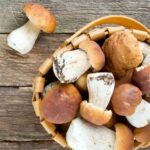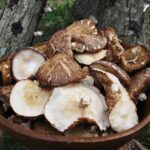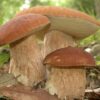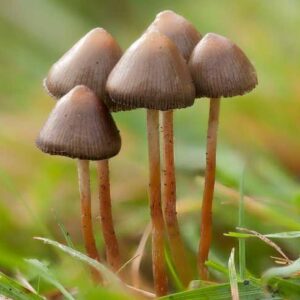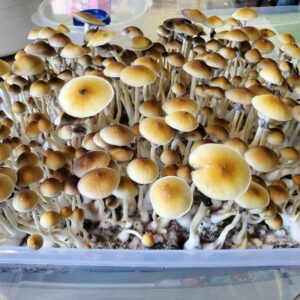Description
Boletus Mushroom For Sales / Buy Edible Boletus Mushrooms Online Here And Get The Recipes For Free.
Boletus mushroom, also known as porcini mushrooms, are a broad species of mushrooms that contain many edible species and no deadly ones.
That’s not to say they’re all good to eat, though. Many will make you WISH you were dead, according to the many stories of upset stomachs and days of pain I’ve read in books and online.
Fortunately, identifying an edible bolete isn’t hard. Though you may not get the species correct, all you need is a few filters in your foraging that will ensure you don’t consume the “wrong” kind of bolete… and God has helpfully designed this mushroom with a few simple characteristics that makes this identification easy.
Ready? Let’s do it!
What Does a Boletus Mushroom Look Like?
First of all, let’s take a look at what a bolete mushroom looks like.
At the top of the ID, you need to know bolete mushrooms are rather dense-fleshed and lack gills.
“Lack gills!” you say, “How can this be?”
Well, it’s not that crazy. I mean, even some fish – like whales – totally lack gills.
Kidding. I know that whales are marsupials, not fish.
(snicker)
Okay, where was I?
Right.
Boletes lack gills. Instead, they have pores on the underside of their cap from which their spores are sent careening off into the world. This spongy surface looks very different from your typical field mushroom, like say a Chlorophyllum molybdites. Look at the gills on the mushrooms in that link, then look at the pores on the bottom of a bolete:
The pores on this bolete look very different from the gills on a regular old mushroom. Photo credit Jason Hollinger.
Very different. Almost like a sponge.
Another thing about boletes is that they work in tandem with certain species of trees and only grow around their roots. In my area, I only find bolete mushrooms growing near oaks.
So – don’t look in a field for boletes. Look near trees!
Once you spot a patch and identify them as edible, remember where that patch is. The bolete fungi lives beneath the ground year-round and only erupts in fruit (mushrooms!) when conditions are right fro reproduction. Usually, that means when it’s rainy and somewhat cool… but not cold. Here I’ve seen some boletes here and there when the weather is in the 90s but it’s been raining for a week and cooling things off while soaking the ground. That said, the best harvests have been in the early fall for me.
Identifying Boletus Mushroom
Take care when selecting beletus mushrooms to eat because most edible mushrooms have non-edible and even poisonous lookalikes. When examining mushrooms, carefully inspect all the mushroom’s parts, as this helps to further identify edible vs. non-edible species:
- Body Shape: The mushroom’s body often determines its species. Notice whether the mushroom has a cap at a 90-degree angle to the stalk, looks like a flower or a big round ball.
- Cap: The part at the top of the stalk which looks like a hat or an umbrella is the cap. Note its width, shape and color.
- Underside of Cap: The underside of the cap may contain pores, spines, gill-like ridges or tubes. Note distinctive features such as spacing, color and stripe attachment. Also check for a veil that covers the gills beneath the cap.
- Stem: The pillar-like column on which the cap sits. Check for stripes, striations or other identifying features such as rings or bulbous protrusions.
- Substrate: Identify where and on what the mushroom grows. Check if it grows on leaves, old logs, wood chips, directly on soil or on animal dung.
- Season: Mushrooms grow at different times of the year. Verifying when the mushroom grows can go a long way to determining whether it’s safe to eat or not.
Edible Beletus Mushroom
Other easy-to-identify Florida mushrooms include mushrooms from the Boletaceae family such as the King Boletus mushroom or Porcini mushroom. As a common edible mushroom, these mushrooms have a mildly nutty taste, grow in the early fall or spring and show up in fir, spruce or pine forests. Tops are medium-to-large sized with a brownish-red, brown or tan caps. Instead of gills on the underside of the cap, boletus look spongy-like with small pores that release spores. Young mushrooms have whitish spores which mature to a yellow-olive color. They have thick stalks, often with a bulb near the ground that tapers toward the top beneath the cap.
Poisonous Beletus Mushroom
To avoid collecting beletus mushrooms that may be poisonous make note:
- Don’t pick mushrooms with white gills, a skirt or ring on the stalk or a sack-like base known as a volva at the bottom of the stem. While some edible mushrooms do have these features, there are deadly versions, like the mushrooms in the Amanita family, that can result in death.
- Avoid mushrooms that have red stalks or caps. Again, there are edible versions of mushrooms with these features, but there are also very poisonous ones.
- Never eat a mushroom you’re not 100 percent certain that is safe to eat. If you have questions about its safety after checking the mushroom against pictures in books or online, don’t eat it.

